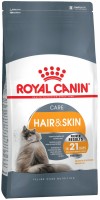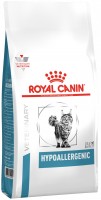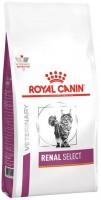Cat Food GimCat
All Cat Food Advanced filters → |
You might be interested in
Cat Food: specifications, types
Type
- Dry food. Feeds in the form of characteristic granules with minimal water content. They are very convenient to use, easy to store (and can be stored for a long time), and are also profitable - in the sense that “drying” is higher in calories than canned food and requires smaller portions. It is believed that it is not so well digested, but dry food of normal quality will definitely not cause harm, the main thing is that the pet always has access to fresh drin...king water. But one of the obvious disadvantages of “drying” is the low fat content.
- Canned food. “Wet” food, which, unlike dry food, contains a large amount of water. It also contains more fat, making it somewhat better absorbed and digested. The main disadvantage of canned food is its short shelf life when opened. In addition, they are not as nutritious as “drying” and are more expensive.
- Milk substitutes. Milk replacers for small kittens who are unable to receive mother's milk. As a rule, they are intended for cubs aged from birth to weaning (about 2 months). Such food is produced in the form of a powder, dissolved in water before use. Some brands can also be used for supplementary feeding of pregnant and lactating cats.
- A treat. “Tiny” food given to the cat little by little as a treat - for example, in the process of training, when building relationships, or just like that, “to cheer up.” Specialized treats are also produced - for example, preventive or with vitamins. Please note that when using such feeds, you must carefully follow the dosage prescribed by the manufacturer.
- Soup. Delicious additions to a cat's basic diet. The increased moisture content in soups allows you to equalize the water balance in your pet’s body, which is very important for animals that drink little water. Finely chopped pieces of meat or fish are often found in soups. This food is suitable as a snack or as a supplement to regular meals throughout the day. The soup will also be a good addition to dry food, especially for tech cats that need to increase their fluid intake.
- Pasta. In the form of a paste, packaged in tubes or bags, food is usually produced in addition to the cat's regular diet. Many toothpastes contain added vitamins, minerals and other beneficial substances to maintain the pet’s health, components for dental care, hair removal, appetite stimulation, etc. Some pastes are supposed to be used as treats for cats.
- Canned food. “Wet” food, which, unlike dry food, contains a large amount of water. It also contains more fat, making it somewhat better absorbed and digested. The main disadvantage of canned food is its short shelf life when opened. In addition, they are not as nutritious as “drying” and are more expensive.
- Milk substitutes. Milk replacers for small kittens who are unable to receive mother's milk. As a rule, they are intended for cubs aged from birth to weaning (about 2 months). Such food is produced in the form of a powder, dissolved in water before use. Some brands can also be used for supplementary feeding of pregnant and lactating cats.
- A treat. “Tiny” food given to the cat little by little as a treat - for example, in the process of training, when building relationships, or just like that, “to cheer up.” Specialized treats are also produced - for example, preventive or with vitamins. Please note that when using such feeds, you must carefully follow the dosage prescribed by the manufacturer.
- Soup. Delicious additions to a cat's basic diet. The increased moisture content in soups allows you to equalize the water balance in your pet’s body, which is very important for animals that drink little water. Finely chopped pieces of meat or fish are often found in soups. This food is suitable as a snack or as a supplement to regular meals throughout the day. The soup will also be a good addition to dry food, especially for tech cats that need to increase their fluid intake.
- Pasta. In the form of a paste, packaged in tubes or bags, food is usually produced in addition to the cat's regular diet. Many toothpastes contain added vitamins, minerals and other beneficial substances to maintain the pet’s health, components for dental care, hair removal, appetite stimulation, etc. Some pastes are supposed to be used as treats for cats.
Type of treat
- Snacks. Delicious snacks for cats are divided into several subtypes. These can be neutral treats to encourage a pet, fortified treats with a rich complex of nutrients, minerals and trace elements, nutritious snacks for an animal, preventive goodies to prevent the formation of tartar and remove excess hair from the gastrointestinal tract.
- Sticks. Treats in the form of chewing sticks or sausages with a hard texture.... Sticks will appeal to cats who love to crunch. Most often, such delicacies are used to prevent tartar and improve digestion.
- Drying natural. Dried treats from natural raw materials for long chewing. The main ingredients in such delicacies are dried rawhide, meat or fish. Natural dryers are often produced in the form of small pieces or cubes, in the form of fish, etc.
- Sticks. Treats in the form of chewing sticks or sausages with a hard texture.... Sticks will appeal to cats who love to crunch. Most often, such delicacies are used to prevent tartar and improve digestion.
- Drying natural. Dried treats from natural raw materials for long chewing. The main ingredients in such delicacies are dried rawhide, meat or fish. Natural dryers are often produced in the form of small pieces or cubes, in the form of fish, etc.
Quantity
The number of feed units in the delivery set.
The meaning of this parameter depends on the type of feed (see above). For dry food, the quantity is indicated only if the composition is packaged in portioned sachets (“pouches”) and there are more than one such sachets in the kit. Such packaging is extremely rare; it is possible to measure portions of dry food without problems from a common package.
But among canned food, many brands are sold in pouches. In addition, for can...ned goods, the number of cans can also be indicated (even if there is only one can). In both cases, the number of units usually corresponds to the number of servings.
For treats, in turn, in this case, the number of individual treats in the package is indicated.
The meaning of this parameter depends on the type of feed (see above). For dry food, the quantity is indicated only if the composition is packaged in portioned sachets (“pouches”) and there are more than one such sachets in the kit. Such packaging is extremely rare; it is possible to measure portions of dry food without problems from a common package.
But among canned food, many brands are sold in pouches. In addition, for can...ned goods, the number of cans can also be indicated (even if there is only one can). In both cases, the number of units usually corresponds to the number of servings.
For treats, in turn, in this case, the number of individual treats in the package is indicated.
Packing
- Tin can. Tin or aluminium container for long-term storage of canned wet food, completely sealed until opened. For ease of opening, a special key is usually provided in the design of the lid of cans.
- Package (pouch). Soft packaging for canned food, which is a small bag of foil and polyethylene with notches at the top for easy opening. As a rule, small portions of food (about 75-100 g) are packaged in spiders. It...can be chopped pieces of meat with vegetables, sauce or broth, pates and jelly.
- Foil container. Trays made of food-grade aluminium foil (lamisters) are designed for storing feed in the form of pates and soufflés. From above, the trays are sealed with a foil lid or film. The volume of the contents of the foil container usually does not exceed 400 g.
- Glass jar. Minced meat, pieces in jelly, sauce or broth are placed in glass jars. Such a container is closed with a tin screw-on lid. The contents are clearly visible through the walls of the glass jar, but the food in this package should not be stored in direct sunlight.
- Package (pouch). Soft packaging for canned food, which is a small bag of foil and polyethylene with notches at the top for easy opening. As a rule, small portions of food (about 75-100 g) are packaged in spiders. It...can be chopped pieces of meat with vegetables, sauce or broth, pates and jelly.
- Foil container. Trays made of food-grade aluminium foil (lamisters) are designed for storing feed in the form of pates and soufflés. From above, the trays are sealed with a foil lid or film. The volume of the contents of the foil container usually does not exceed 400 g.
- Glass jar. Minced meat, pieces in jelly, sauce or broth are placed in glass jars. Such a container is closed with a tin screw-on lid. The contents are clearly visible through the walls of the glass jar, but the food in this package should not be stored in direct sunlight.
Breed
Each breed of cats ( Bengal, British, Maine Coon, Persian, Ragdoll, Siamese, Siberian, Sphynx) has individual physiological characteristics of the organism and presents its own requirements for the diet. Feeds for certai...n breeds of pets take into account the weight and height of the cat, the length of the coat, the genetic predisposition to various diseases or obesity, and other factors. Breed-specific food provides for all these aspects - the pet receives exactly the diet that provides him with health and energy.
However, food is not always applicable to a particular breed. In such cases, the purpose of the type of wool will be very relevant. All modern breeds are conditionally divided into long-haired and short-haired. Based on these features, the composition of the feed is selected: for example, long-haired cats require more nutrients for wool, and lumps of swallowed and undigested hairs often form in their stomachs.
However, food is not always applicable to a particular breed. In such cases, the purpose of the type of wool will be very relevant. All modern breeds are conditionally divided into long-haired and short-haired. Based on these features, the composition of the feed is selected: for example, long-haired cats require more nutrients for wool, and lumps of swallowed and undigested hairs often form in their stomachs.
Age
Age category for which the food is designed.
Different ages are associated with different needs for energy, nutrients, vitamins and trace elements. For example, kittens need large amounts of proteins, fats and minerals to grow properly. It is for small kittens that the largest number of nutrition gradations by age has been introduced (from 1 month, 3 months, 6 months, 12 months). Young cats use a lot of energy, while older cats tend to have dental and digestive problems, and need eas...ily digestible and non-solid food. These features are taken into account when creating feed.
Specifically, by age, cats in this case can be divided into the following categories:
- Kittens - from birth to reaching the size of an adult cat (8 - 12 months). Solid foods can be given to kittens from about 1 month of age; before that, if there is no lactating mother cat nearby, it is recommended to use milk replacers.
- Young - from one to two years.
- Adults - from 2 to 7 - 8 years.
- Elderly - from 7 - 8 years and above.
Different ages are associated with different needs for energy, nutrients, vitamins and trace elements. For example, kittens need large amounts of proteins, fats and minerals to grow properly. It is for small kittens that the largest number of nutrition gradations by age has been introduced (from 1 month, 3 months, 6 months, 12 months). Young cats use a lot of energy, while older cats tend to have dental and digestive problems, and need eas...ily digestible and non-solid food. These features are taken into account when creating feed.
Specifically, by age, cats in this case can be divided into the following categories:
- Kittens - from birth to reaching the size of an adult cat (8 - 12 months). Solid foods can be given to kittens from about 1 month of age; before that, if there is no lactating mother cat nearby, it is recommended to use milk replacers.
- Young - from one to two years.
- Adults - from 2 to 7 - 8 years.
- Elderly - from 7 - 8 years and above.














